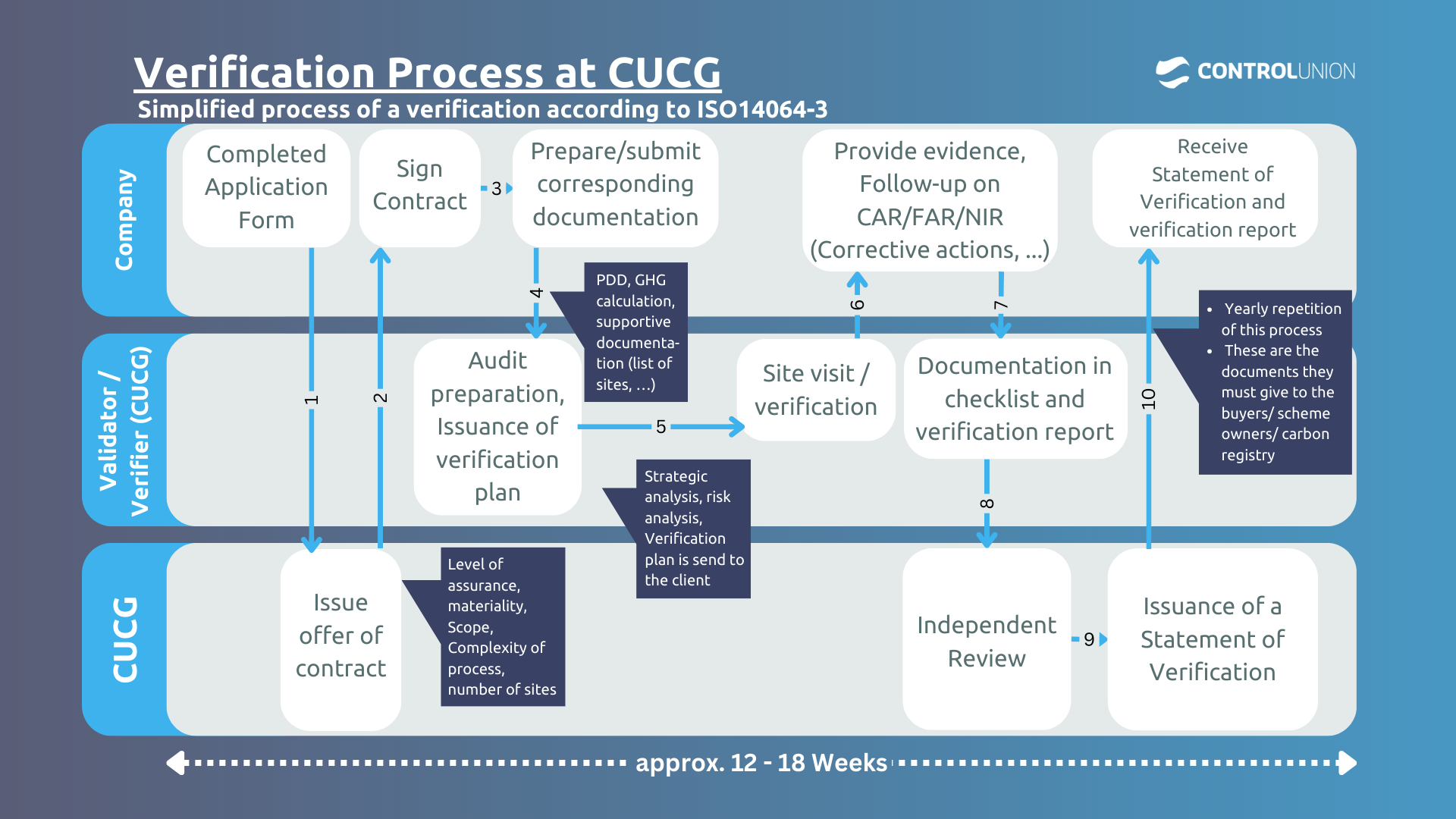Climate change is one of the most pressing issues society faces today. In order to limit the temperature rise to 2 degrees, global greenhouse gas (GHG) emissions must be reduced. The call on companies to contribute to this goal by monitoring and reducing their emissions is increasing. Control Union can support your organisation in doing your part as your ISO 14064 accredited validation and verification body (VVB).
ISO 14064-1 is the base guideline for compiling a corporate GHG inventory, or, in other words, calculating the corporate carbon footprint. Corporate GHG emissions can be divided in three scopes:
The choice on which scopes to include depends on your company’s needs and where most of the emissions take place. Our support focuses on verifying your annual GHG emissions according to ISO 14064-3, which specifies requirements for the verification of emissions. After completion you receive a verification statement. This provides you confidence in the accuracy of your carbon footprint claims, and assurance to your stakeholders and investors. Our verification services also enjoy external recognition by agencies such as the Carbon Disclosure Project (CDP).
ISO 14064-2 is the base guideline for implementing an emission reduction project. Setting up an emission reduction project will help you to identify opportunities for reduction of your scope 1, scope 2 and/or scope 3 emissions. We offer both validation of project plans (before implementation) and verification of emission reductions (after implementation).
Getting your project plan validated by Control Union provides you the confirmation that the changes you are planning to implement will actually result in reduced emissions. Verification of the emission reductions after the project implementation provides you and your stakeholders assurance of the actual achieved emission reductions.
In some cases, emission reductions are even eligible to be converted into carbon credits. These credits can be sold as offsets to companies who want or need to compensate their own emissions.
There are several standards that issue carbon credits, each with their own focus and project requirements. In order to assure the quality of those credits, standards require third-party validation of project plans before implementation, and third-party verification of the realised emission reductions after implementation.
